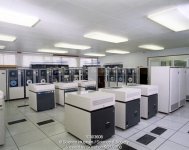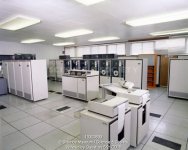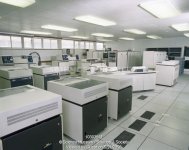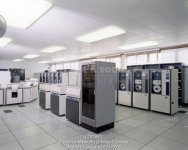Yzzerdd
Veteran Member
Stay off the road!!!
I got my license today. I was surprised to see that they are still using late 80s vintage PCs in there. Clicky keyboards, green monochrome monitors, dot-matrix printers, the whole 9 yards. As a matter of fact, the vintage PCs are even running finger print scanners, fancy cameras, and digital signature thingys. Pretty cool. I tried to take a picture, but was told that due to the potentially sensitive information on the monitors, I was not allowed. It looked like they were terminals connected potentially to a server or maybe even mini in the back room. That, or they had individual PCs under the counter. Who knows. I saw "Aoos" and "NCR" terminals.
Oh, and while I was with my bro in Guitar Center, I got a look at a late 80s or early 90s Wyse terminal that was being used for the employees to pull up info. It was displaying a paragraph describing that it was a private machine, and was sitting at the "login:" prompt. Pretty cool. Didn't have my camera that time.
Anyone else have a story or picture to share about vintage PCs still in use today?
--Ryan
MOVING TODAY!!! WOOO!
P.S. in WV with my Mom and her bit of the family, I go by Jack and will thusly begin signing it again at the bottom of my messages. This is probably the last time I will be signing as Ryan.
I got my license today. I was surprised to see that they are still using late 80s vintage PCs in there. Clicky keyboards, green monochrome monitors, dot-matrix printers, the whole 9 yards. As a matter of fact, the vintage PCs are even running finger print scanners, fancy cameras, and digital signature thingys. Pretty cool. I tried to take a picture, but was told that due to the potentially sensitive information on the monitors, I was not allowed. It looked like they were terminals connected potentially to a server or maybe even mini in the back room. That, or they had individual PCs under the counter. Who knows. I saw "Aoos" and "NCR" terminals.
Oh, and while I was with my bro in Guitar Center, I got a look at a late 80s or early 90s Wyse terminal that was being used for the employees to pull up info. It was displaying a paragraph describing that it was a private machine, and was sitting at the "login:" prompt. Pretty cool. Didn't have my camera that time.
Anyone else have a story or picture to share about vintage PCs still in use today?
--Ryan
MOVING TODAY!!! WOOO!
P.S. in WV with my Mom and her bit of the family, I go by Jack and will thusly begin signing it again at the bottom of my messages. This is probably the last time I will be signing as Ryan.





